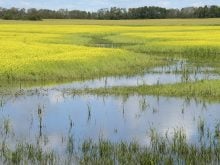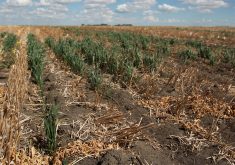The Canada-Saskatchewan Feed Program accepted applications until March 15 and is now making final payments to eligible producers
REGINA — Livestock producers who enrolled in Saskatchewan’s drought relief program last fall will get additional payments within a few weeks.
Agriculture minister David Marit announced April 8 that there is enough money within the Canada-Saskatchewan Feed Program to add to the initial payments of $150 per head.
The top-up will be up to $50 per head for producers within designated regions according to the Canadian Drought Monitor map.
Read Also

Short rapeseed crop may put China in a bind
Industry thinks China’s rapeseed crop is way smaller than the official government estimate. The country’s canola imports will also be down, so there will be a lot of unmet demand.
The province made money available to producers outside those regions as well. They got $60 per head and will now get another $20.
A total of 3,486 producers applied.
“It’s quite a few when you look at the total number (of livestock producers),” Marit said.
Eligible species included beef cattle, bison, elk, deer, sheep, goats and horses. Producers were required to submit receipts for extraordinary expenses incurred between May 1, 2023 and March 15 to buy or transport feed, or for land rented for additional grazing or feed production.
They also had to indicate the number of breeding animals they had as of Aug. 21, 2023 and kept until Jan. 31.
“SARM appreciates the top-up funding to the Canada-Saskatchewan Feed program, which will help livestock producers who are experiencing extra costs associated with drought,” said Saskatchewan Association of Rural Municipalities president Ray Orb.
“SARM values the ongoing commitment from both levels of senior government to Saskatchewan agriculture.”
The province committed up to $70 million for the program, while Ottawa contributed $77 million through the AgriRecovery disaster relief framework to address extraordinary costs.
Marit said he continues to be concerned about moisture conditions this year. Recent snowfall helped fill some dugouts but the ground is soaking up most of the moisture, he said.
He encouraged all livestock producers and grain growers to take a look at the business risk management programs available to them in the event of another dry year.
“I’m not saying they’re perfect,” he said. “It’s an opportunity to mitigate risk.”
The Water Security Agency last week said most of the province’s reservoirs will fill. There are 45 major reservoirs and 33 were near full or expected to fill. Six more were between 70 and 90 percent full and still filling.
However, the six that won’t fill are in the southwest, where some producers have already experienced seven years of drought.
Lake Diefenbaker, which supplies 60 percent of the province’s water for drinking, irrigation and other uses, is more than one metre higher than it was at this time last year and 1.5 metres higher than in April 2022.
The agency said the lake level is just above the normal historical average and about 80 percent full.
The concern is that snowmelt coming off the Rocky Mountains will be so little this year that recharge will be minimal.
Contact karen.briere@producer.com
















